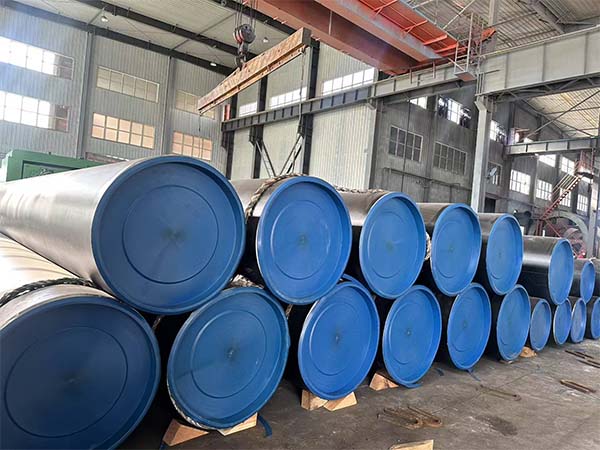When using and installing steel pipes, choosing the appropriate size of the steel pipes is of vital importance. The correct pipe diameter can ensure the flow rate and velocity of the system under the specified working conditions, while meeting the design pressure and corrosion resistance requirements, and also taking into account economy and construction convenience. The following provides you with a detailed introduction to the scientific method of steel pipe selection from aspects such as size system, wall thickness selection, flow rate calculation, and pressure-bearing verification.
The basic concept of steel pipe sizes
Nominal diameter (NPS) : The common naming convention in North America (for example, NPS 2), its outer diameter (OD) is not equal to 2 inches, and the OD of NPS 2 is actually 2.375 in. It is only for marking and not the actual inner diameter.
Nominal diameter (DN) : An international standard, expressed in millimeters, generally close to the inner diameter. It has a correspondence with NPS, for example, NPS 2 corresponds to DN 50.
Wall thickness (Schedule) specification: Schedule (SCH) indicates the grade of pipe wall thickness, with common ones including SCH10, SCH40, SCH80, SCH160, etc. The larger the number, the thicker the wall thickness, and the stronger the pressure resistance and load-bearing capacity, but the inner diameter correspondingly decreases.
Actual inner diameter and outer diameter: Outer diameter (OD) : The pipe is usually fixed under the same specification and only varies with NPS. Inner diameter (ID) : Related to wall thickness, ID = OD - 2× wall thickness.

The main factors influencing the selection of steel pipe sizes
Medium type and flow rate
Liquids (such as water and oil), gases or solid particles each have different flow characteristics and allowable flow rates, which need to be evaluated in combination with fluid mechanics parameters such as Poisson blade number and Reynolds number.
System working pressure and temperature
In high-pressure and high-temperature environments, pipes with higher pressure and temperature resistance performance (such as API 5L, ASTM A106, etc.) should be selected, and the Schedule grade with the corresponding larger wall thickness should be chosen.
Pipeline length and pressure drop limit:
Under conditions of limited pressure drop, if the pipe diameter is too small, it will generate excessive frictional resistance, leading to excessive pressure drop or the need to increase the pump power. A pipe diameter that is too large will waste materials and construction space.
Installation environment and space constraints
The on-site layout, trench or equipment connection space will limit the upper limit of pipe diameter. It is necessary to take into account the compact layout while meeting the requirements of flow rate and pressure drop.
Economy and Material costs
The increase in pipe diameter and wall thickness will raise material costs and construction difficulty. An economic comparison should be made by comprehensively considering the unit price of materials, processing and welding costs, and later maintenance costs.
Corrosion and protection requirements:
For corrosive media or external environments (such as the ocean, chemical plants), inner lining, outer anti-corrosion coating or corrosion-resistant alloy pipes should be selected. The corresponding specifications will also affect the pipe diameter and wall thickness.
The process of selecting the size of steel pipes
Demand analysis
Clearly define the medium conveyed by the pipeline, design flow rate, design pressure and temperature, allowable pressure drop, on-site space and installation conditions.
Preliminary calculation
Calculate the pressure drop or the required pump power under different pipe diameters based on the Bernoulli equation and the energy equation. Estimate the flow velocity of the pipeline using empirical formulas.
Reference standard table
Refer to the pipe size comparison table, confirm the outer diameter and wall thickness (Schedule) corresponding to each NPS, calculate the actual inner diameter and cross-sectional area, and recheck whether the flow rate and pressure drop meet the requirements.
Economic comparison
Compare the material costs, processing fees, installation fees and operating energy consumption corresponding to the available pipe diameters, and select the solution with the lowest total cost and meeting the performance requirements.
Verification and optimization
Based on the pressure drop correction of the pipe length and the number of accessories (valves, elbows, tees, etc.), fine-tune the pipe diameter or add branch pipelines when necessary to optimize the system performance.
Precautions when choosing the size
Safety margin: For critical pipelines, the wall thickness or pipe diameter should be appropriately increased to ensure sufficient safety margin even under overload operation or extreme conditions.
Standard consistency: The entire system should adopt the same standard or a unified pipe diameter series as much as possible, reduce the number of reducers of different diameters, and enhance the overall reliability of the system.
Post-maintenance: Although large pipe diameters can reduce pressure drop, they are not conducive to on-site maintenance, pipe blowing and cleaning, and other operations. Both construction and operation and maintenance convenience should be taken into account.
Special media: Mud, solid particles or high-viscosity media are sensitive to pipe diameter and flow rate. It is necessary to consult the material supplier or professional fluid engineer for special calculation.
The reasonable selection of the size of steel pipes requires a comprehensive consideration of multiple factors such as fluid mechanics calculation, material performance, economy and construction convenience.
Read more:ERW carbon steel pipe sizes
